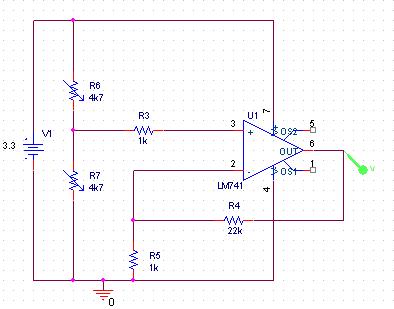Hi,
I am trying to design a thermistor based airflow sensor, but I am having trouble with getting the output voltage at a suitable level.
My current circuit takes two 4k7 positive coefficient linear thermistors set up as a potential divider and the second thermistor is externally heated with an additional resistor so that the potential divider is constantly biased one way.
However, the output has a very small swing of 0.1V - when measured through my 10bit ADC is only 30points. Given that the line could be noisy this isnt acceptable.
I tried amplifying the signal through a non-inverting op-amp but I need to reduce my input voltage by around 1.6V before I can amplify it - any thoughts?
I am trying to design a thermistor based airflow sensor, but I am having trouble with getting the output voltage at a suitable level.
My current circuit takes two 4k7 positive coefficient linear thermistors set up as a potential divider and the second thermistor is externally heated with an additional resistor so that the potential divider is constantly biased one way.
However, the output has a very small swing of 0.1V - when measured through my 10bit ADC is only 30points. Given that the line could be noisy this isnt acceptable.
I tried amplifying the signal through a non-inverting op-amp but I need to reduce my input voltage by around 1.6V before I can amplify it - any thoughts?


